Konkan region of Maharashtra is blessed with natural wonders. From food to nature, it has got everything in abundance. Konkani foods are unique and has a taste of coastal breeze in its every bite!
Konkani cuisine is easily distinguishable due to its unique flavors. Almost all of the curries aare coconut based. Kokum (Garcinia indica) is also native to this region and is used with free hands in their foods.
Due to its coastline, seafood is the major part of their staple food. Plus, konkan is blessed with tremendous rainfall and hence rice is grown majorly in this region. It is the staple food for locals. Ask any konkani person, they will never feel satisfied after their meal if it does not contain rice!
Being a konkani myself, I have tasted many staple dishes in my house and in our village. I love the uniqueness and variety it offers in foods. In this article, I will share some of my favorite dishes from Konkan that you must try on your next trip to konkan.
Table of Contents
Vegetarian Konkani Foods
1. Modak
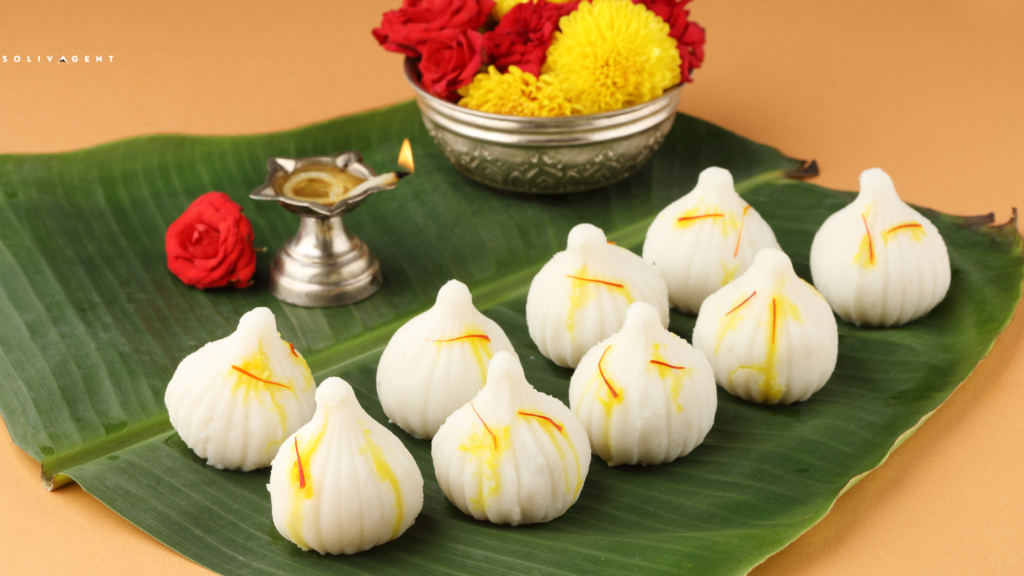
This is not a dumpling as it seems to be one. It is a very delicious sweet that is made to offer to Hindu Deity Ganesha. It is considered to be his favorite.
Modak is one of the most popular konkani foods. It is completely healthy so you can enjoy this as a desert without any guilt!
It’s cover is made with rice flour and the filling is of coconut and jaggery. It is steamed and while serving they pour ghee and kesar on its top! Trust me, a nicely made modak will make you crave for more!
If you visit konkan during Ganesh Chaturthi, you must try Modak there!
Want to Cook this sweet treat at your home?
Shopping List

2. Solkadhi
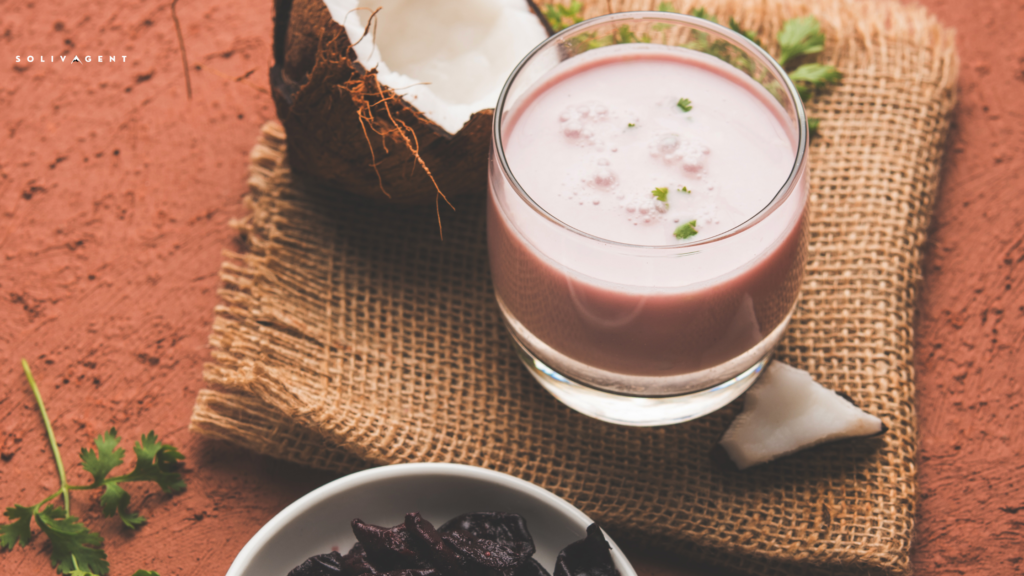
Solkadhi is yet another one of the most famous Konakni Foods. It is consumed post meal for better digestion. It has a unique tangly-sweet-spicy flavor dervied from its staple ingredients.
Sol means Kokum and kadhi means curry. A very simple process of grinding a couple of ingredients such as, grated coconut, garlic cloves, ginger, green chillies, and then straining its water will give you the base of this kadhi.
Later add Kokum Agal (concentrated syrup pf Kokum) to it for the prime flavor and color.
3. Shirvale
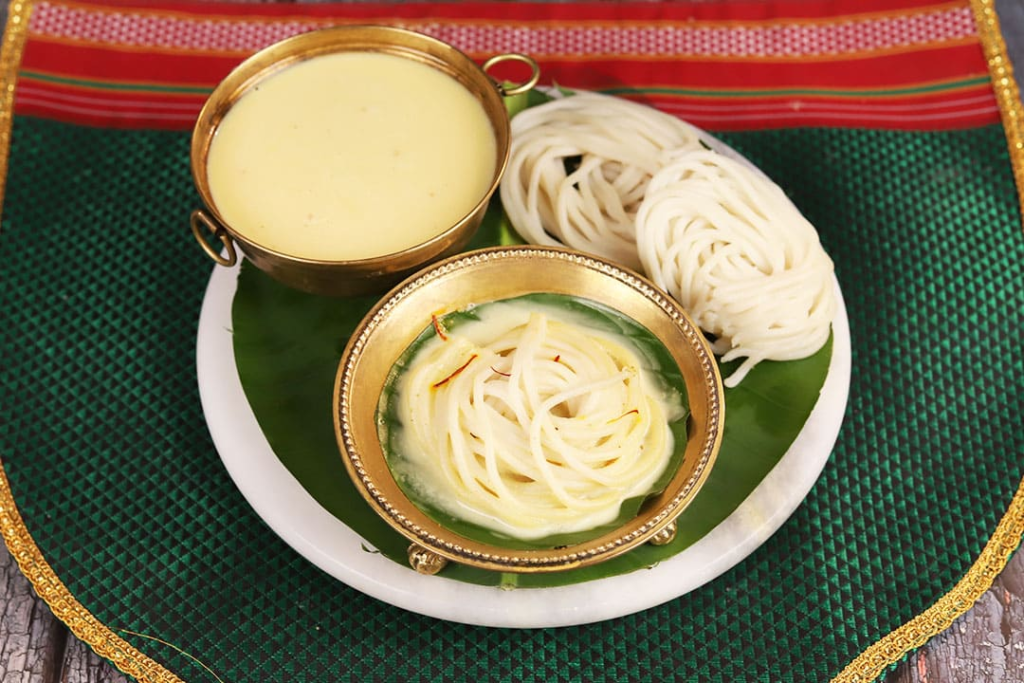
Konkani Foods
This is one of the rarely made konkani foods. Its a very simple yet healthy and delicious recipe that lets you taste the rich flavors of Konkan. In simple words, it’s a sweetened noodle soup made with Rice Flour.
Rice flour is cooked in the boiling water and the dough is kneeded. Then they make it into the noodle shape, steam it and eat with cold coconut soup.
Making Shirvale requires patience and skill as the rice flour dough is kneaded, boiled, and then pressed through a sevian maker to create the delicate noodles.
The combination of the soft, chewy noodles with the rich, sweet coconut milk sauce creates a delightful taste experience. Shirvale is often prepared for festive occasions and family gatherings, making it a cherished part of Kokan culinary heritage.
Patoli
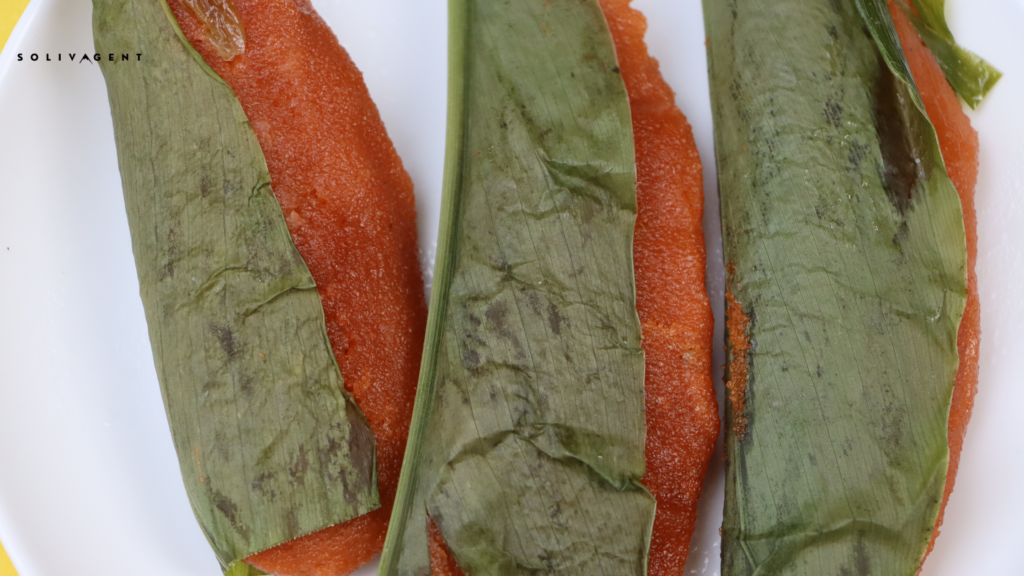
Patoli is very similar to Modak, in terms of taste and is one of the beloved Konkani Foods. It’s a delightful combination of soft, steamed rice dumplings, a sweet coconut and jaggery filling, all wrapped in the aromatic turmeric leaf.
Cover of the patoli is made with rice flour and the fillings are similar to the Modak. While steaming the Patoli, it is wrapped in a turmeric leaf. It imparts a distinctive, earthy aroma and flavor to the sweet filling.
The soft, chewy rice dumplings contrast beautifully with the slightly crunchy turmeric leaf.
Patoli is often prepared for special occasions and festivals, adding to its celebratory charm. Making Patoli is a time-consuming process, involving the preparation of the dough, filling, and careful wrapping, making it a cherished family tradition.
Amboli

Konkani Foods
Amboli is a savory panckae made with fermented rice flour, urad dal and poha. It is one of the popular staple konakni foods for breakfast. It is similar to south indian dosa, but amboli is more fluffy, thicker and softer.
Amboli is one of the most versatile Konkani foods that you can eat at any time. We eat it with Chai as a breakfast. Or you can eat it with Meat curries for meals. For vegetarians, special- spicy black chana coconut curry is made to be eaten along with Amboli. You can also eat it plain, with a dollop of butter, or with various chutneys and pickles.
Amboli is a beloved breakfast choice for many, offering a satisfying and comforting start to the day.
Ghavane
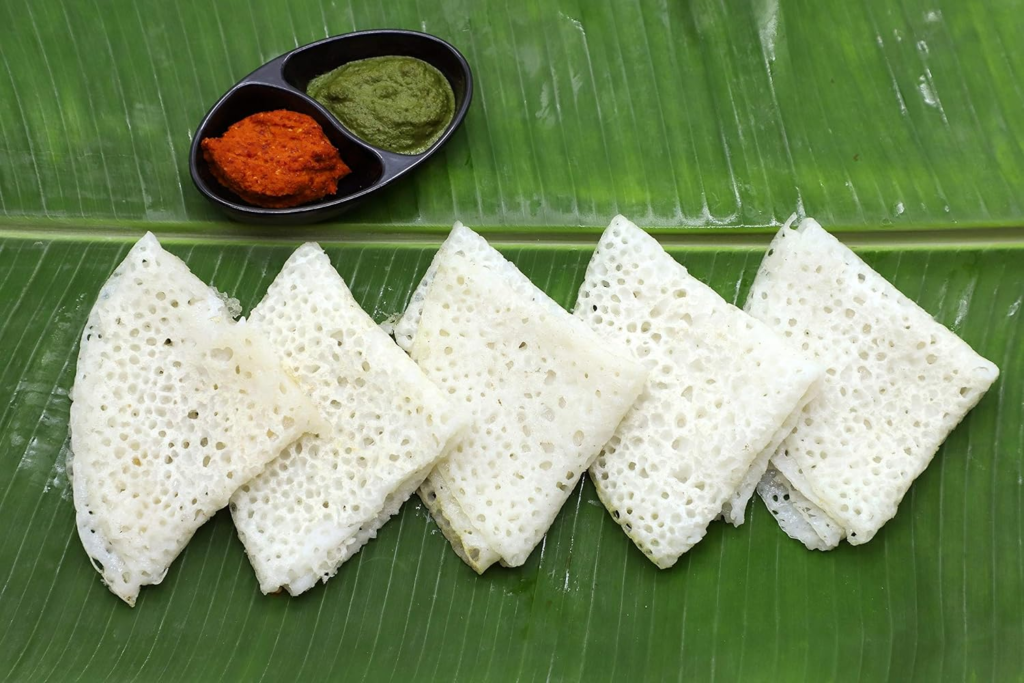
A true 3 ingredients breakfast, popular in Konkan. At every Konkani House you will find this at least once a week. It is simple, quick to make, and delicious. Ghavane is similar to the Neer Dosa, but what makes it unique, is the quickness.
For making Ghavane we only need three simple ingredients- salt, water and rice!
It is a speedy breakfast option, because this dosa needs no fermentation! Their neautral taste makes it very versatile and you can pair it with any curry or chutney!
My favorite Ghavane combination has to be with the chai or Chicken Curry!
Fanas (Jackfruit) Bhaji
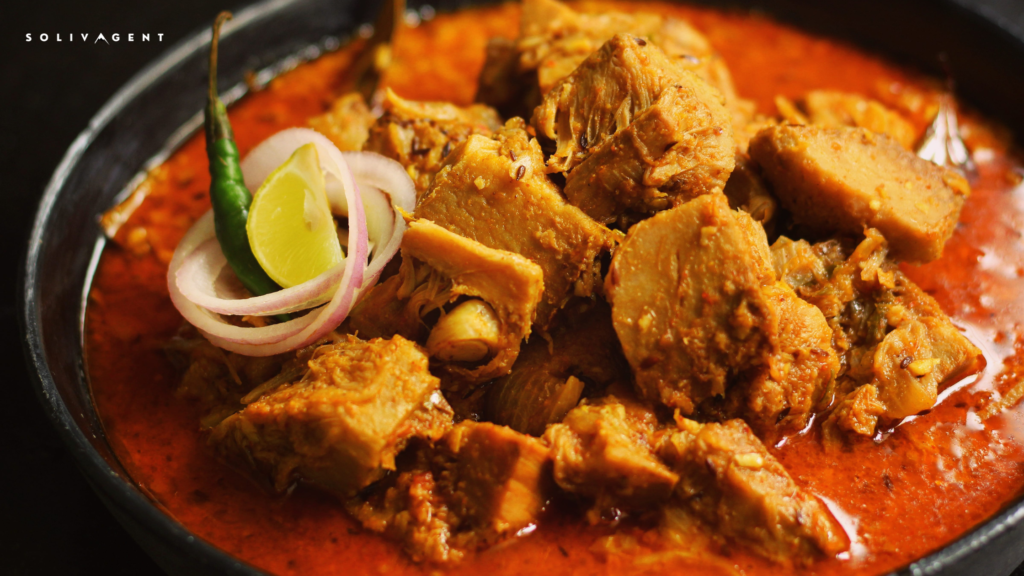
Konkan region is blessed with Jackfruits in abundance. In Konkan, you would find one jackfruit tree in the backyard of every house. This sabzi is made with raw jackfruits that gives a rich and earthy flavor to the dish.
Can be cooked dry or with a gravy, depending on personal preference.
It is a great source of vitamins and fibres making this dish immensly healthy. The preparation of Fanas Bhaji requires some patience and skill due to the sticky nature of raw jackfruit. However, the end result is a truly satisfying and authentic Konkan meal.
Kokum Juice
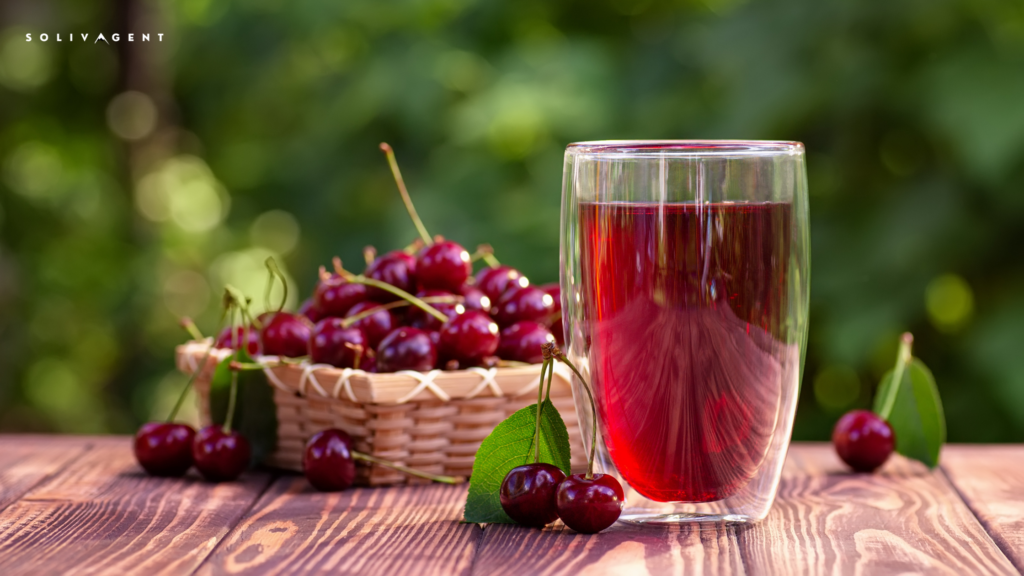
Also known as Kokum Sharbat, is a refreshing and tangy beverage that is a staple in the Konkan region of India, especially during the hot summer months. It’s made from the dried fruit of the kokum tree known as ratambe, which is native to the Western Ghats.
It brings back a vivid memory of my village, where we used to go to in Summer months. Me and my granny used to go to the jungle where hundreds of Kokum tree were located. We would collect all the ratambe and would come back in the evening.
You have to wash these fruits, cut in half, add sugar and keep it in the sun. The sugar will melt and will the fruit will release flavours. This thick juice is a sweetened & concentrated flavors of that fruit. To make a sharbat, you will have to add water to adjust consistency and taste.
It is best for digestion and is healthy, especially drunk in the events of Pitta.
Kaju (Cashew) bhaji
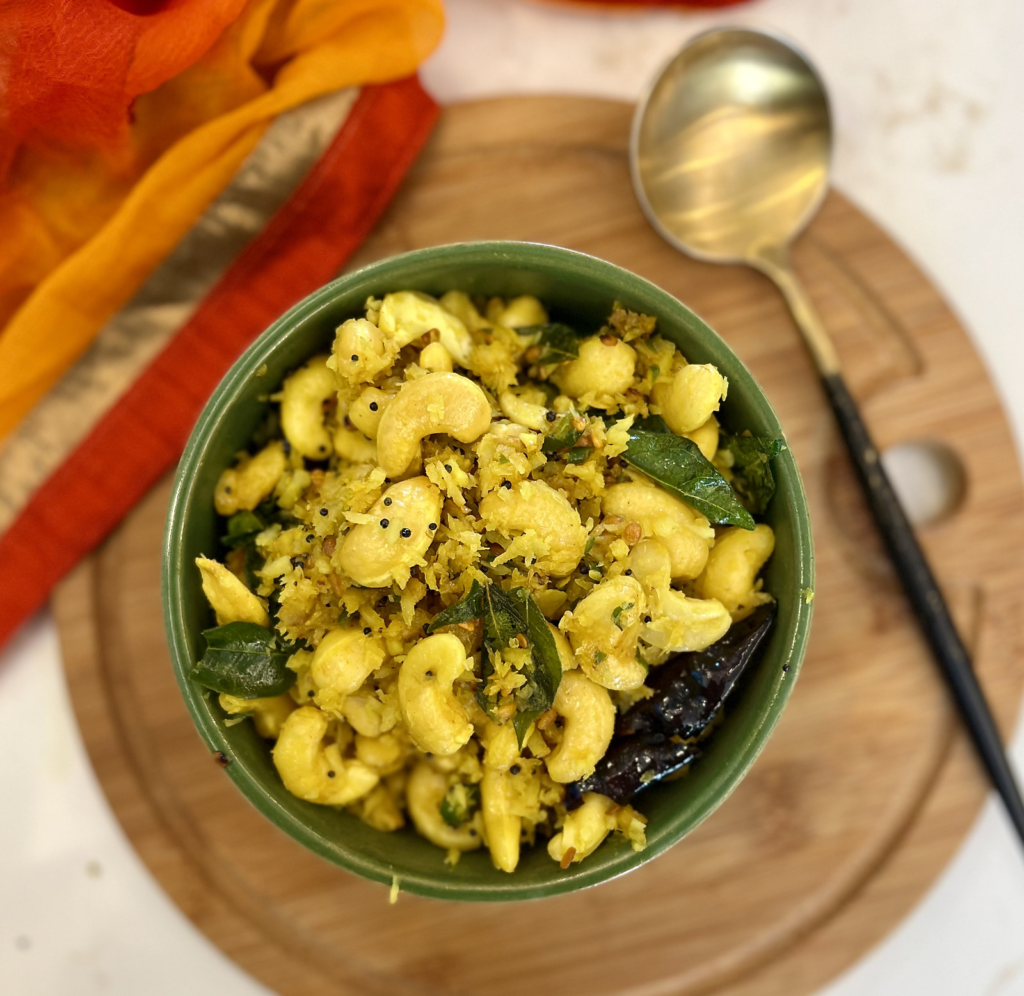
Konkani Foods
Konkani Kaju Bhaji is a rich and creamy curry made with cashews, a staple ingredient in the coastal cuisine of Maharashtra. It’s a popular dish enjoyed for its rich, nutty flavor and smooth texture.
If you want a gravy sabzi with creamy texture, you will need cashews to ground into a smooth paste, giving the curry a luxurious consistency. Otherwise use raw cashews. The combination of coconut and spices creates a deep, flavorful base.
It is a versatile dish and can be enjoyed as a side dish or as a main course with rice or roti. Often prepared for festive gatherings and celebrations.
| Read Also-> 9 Best Indian Festivals in 2024 |
Malwani Khaja
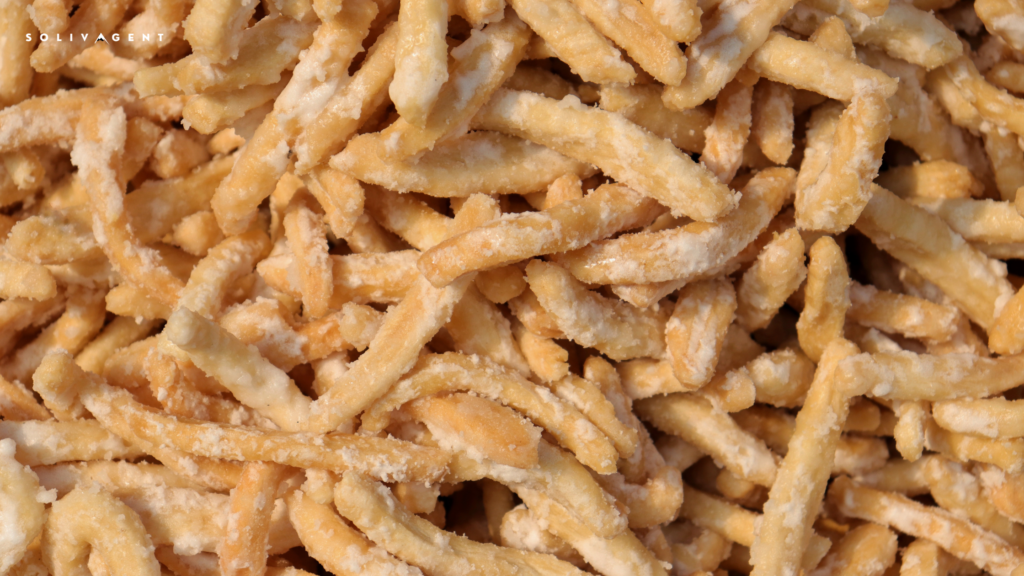
Malvani Khaja is a beloved sweet treat from the Malvan region of Maharashtra. It’s a crispy, deep-fried snack coated in a sweet jaggery syrup. The combination of the salty dough and sweet jaggery syrup creates a unique flavor profile.
The khaja is light and crunchy. Making Malvani Khaja is a labor-intensive process involving multiple steps.
The making of Malvani Khaja is a culinary art, requiring skill and patience. The dough is carefully prepared, shaped into thin strips, and deep-fried to perfection. The final touch is the coating in a sticky jaggery syrup, which adds the signature sweetness.
Tandul Bhakari
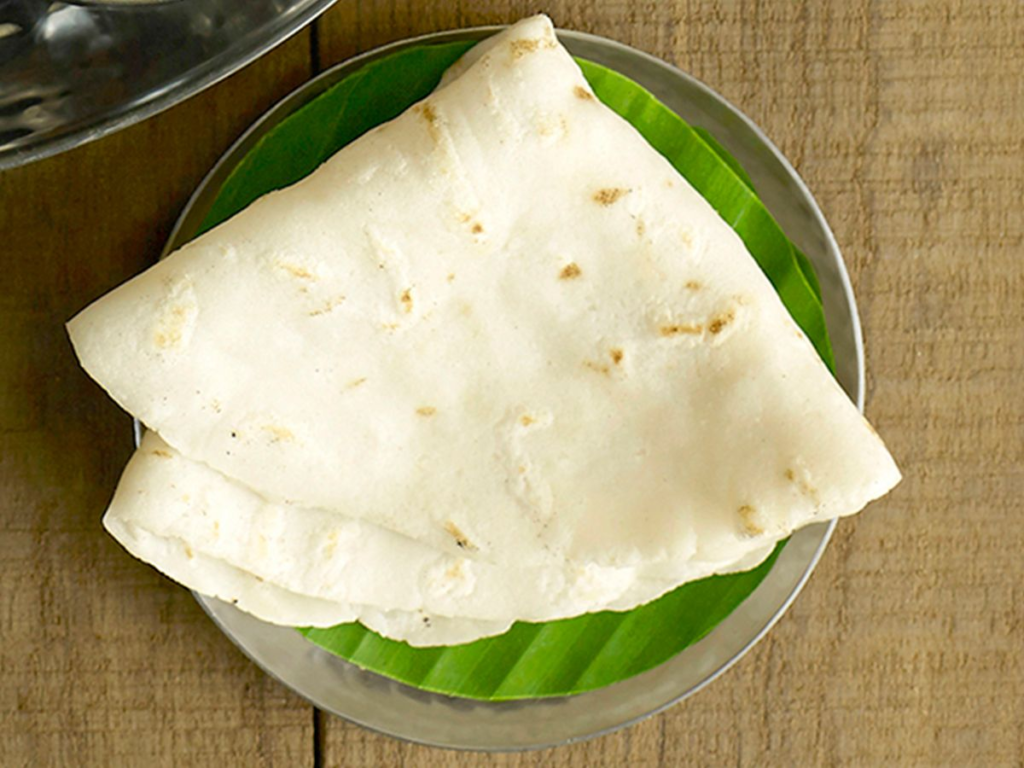
Konkani Foods
Tandul Bhakri is a staple food in the Konkan region of Maharashtra, India. It is a type of flatbread made from parboiled rice flour. The rice is soaked overnight, then ground into a fine flour. The flour is then mixed with water to form a dough, which is then patted into thin flatbreads and cooked on a griddle.
Tandul bhakri is a versatile food that can be eaten plain or with a variety of side dishes. It is often served with a daal (lentil soup), a bhaji (vegetable dish), or a chutney (spicy condiment). It can also be eaten with a sweet dish, such as jaggery or fruit.
Tandul bhakri is a nutritious food that is high in fiber and low in fat. It is also a good source of vitamins and minerals.
Narali Bhat
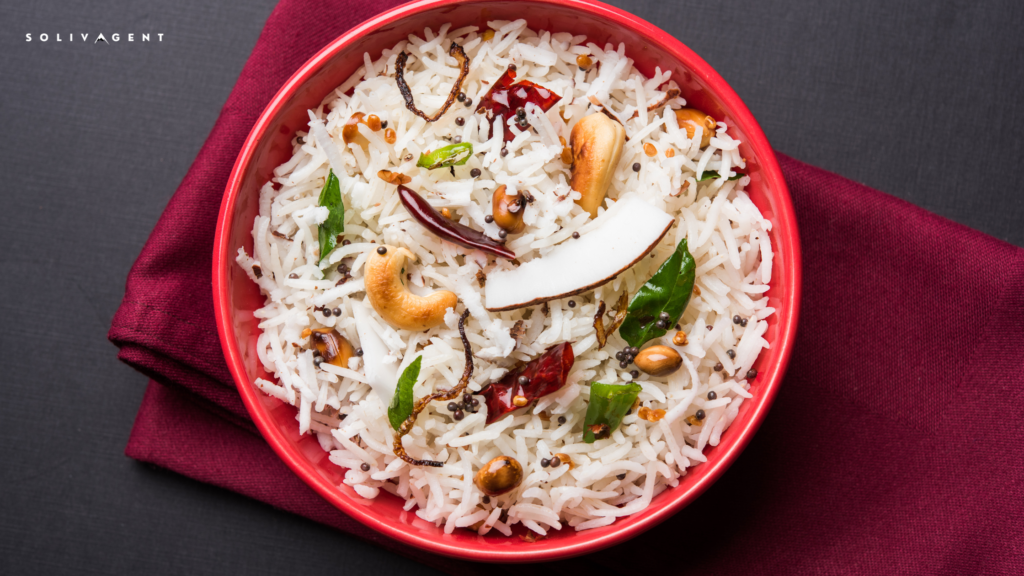
Narali Bhat is a popular and traditional Maharashtrian dish, especially associated with Narali Pournima. It’s a sweet coconut rice dish made with fragrant rice, grated coconut, jaggery (or sugar), and a blend of aromatic spices.
This festival marks the end of the monsoon season and is celebrated with great enthusiasm in coastal Maharashtra, including the Konkan region. It’s a day of thanksgiving to the sea god Varuna.
On Narali Pournima, people offer coconuts to the sea as a mark of respect and gratitude. The day also signifies the beginning of the fishing season. Narali Bhat is a customary dish prepared and enjoyed on this auspicious occasion.
Amba Poli
Amba Poli, also known as Aam Papad, is a delightful and unique delicacy hailing from the coastal region of Konkan, India. It’s a sweet and tangy treat made primarily from ripe mangoes, and it embodies the essence of the Konkani culinary tradition.
The mangoes are peeled, deseeded, and then pureed to create a smooth pulp. A blend of spices like cardamom and cloves, and sweeteners like jaggery or sugar, are added to the mango pulp to enhance the flavor.
The flavored mango pulp is spread thinly on a clean surface and left to dry under the sun for several days. This process concentrates the flavors and transforms the pulp into a sheet-like consistency.
Traditionally, Amba Poli was a method of preserving the abundant mangoes of the region for consumption throughout the year.
In a similar way fanaspoli is also prepared. This is one of the vast memories of my village, where entire family used to gather and engage in Amba poli making.
Non-vegetarian Konkani Foods
Given the coastal location, seafood is the cornerstone of Konkani non-vegetarian cuisine. Fish like pomfret, mackerel, and prawns are staples. Konkani cuisine makes extensive use of dried fish, which is a staple during the monsoon season.
Many Konkani recipes involve traditional methods like slow cooking, fermentation, and using earthenware pots, preserving authentic flavors.
Kombadi Wade
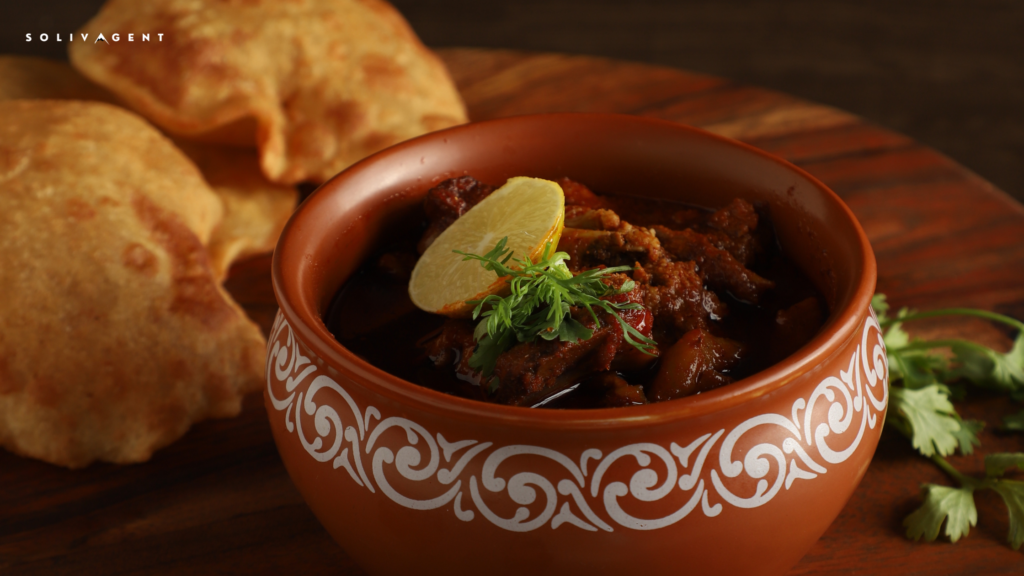
Kombadi Wade is a classic and flavorful dish hailing from the Konkan region of Maharashtra, India. It’s a delightful combination of spicy chicken curry (kombadi) and crispy, puffed-up vade (fried flatbreads).
Often accompanied by a refreshing drink of solkadhi, this dish is a true representation of the region’s rich culinary heritage.
The chicken curry is typically a rustic, spicy preparation with a unique blend of spices that varies from household to household. Each family has its secret recipe, making it a truly authentic and personal dish.
These are light and airy flatbreads made from a blend of rice, ragi, wheat, and sometimes even lentil flour. The vade are deep-fried until puffed up and crispy, adding a delightful contrast to the spicy curry.
While Kombadi Wade can be enjoyed year-round, it holds a special place in Konkani households during festive occasions like Gatahari (Deep Amavasya), Gauri Ovase, Dev Diwali, and Shimga.
These celebrations often see families and communities coming together to share this delicious meal, reinforcing its cultural significance.
Sukat

Konkani Foods
Sukat is a popular method of preserving fish in the coastal regions of India, including Konkan. It involves drying fish under the sun or using artificial drying methods. This process concentrates the flavor of the fish and extends its shelf life, making it a staple during the monsoon season when fresh fish might be difficult to find.
A staple in Konkan cuisine, mackerel is often dried to create sukat. But most preferably, Bombil and other small fishes like prawns are dried to make sukat.
Fish Curry
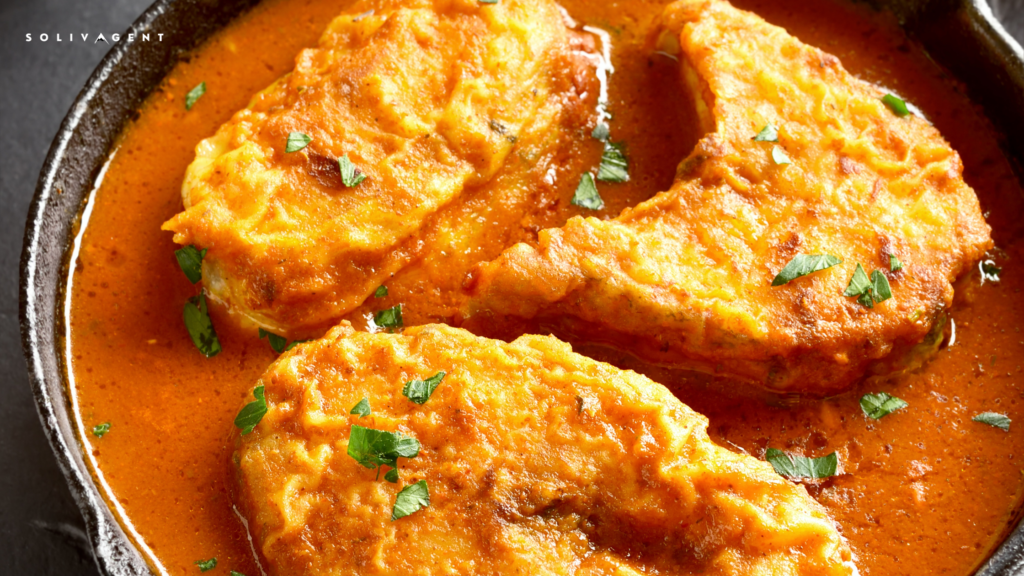
Konkan fish curry is a culinary masterpiece that reflects the rich coastal heritage of the Konkan region in India. Renowned for its distinct flavor profile and aromatic spices, this curry is a staple in Konkani households.
The cornerstone of any Konkan fish curry is the utmost freshness of the fish. Traditionally, fishermen would catch the fish and it would be directly cooked, ensuring the best possible taste.
The generous use of coconut, either grated or in the form of coconut milk, is a hallmark of Konkan cuisine. It lends a rich, creamy texture and a subtle sweetness to the curry.
Many Konkani families follow Hindu traditions, and fish curry often forms part of the vegetarian or non-vegetarian offerings during religious ceremonies and festivals.
Grilled Fish
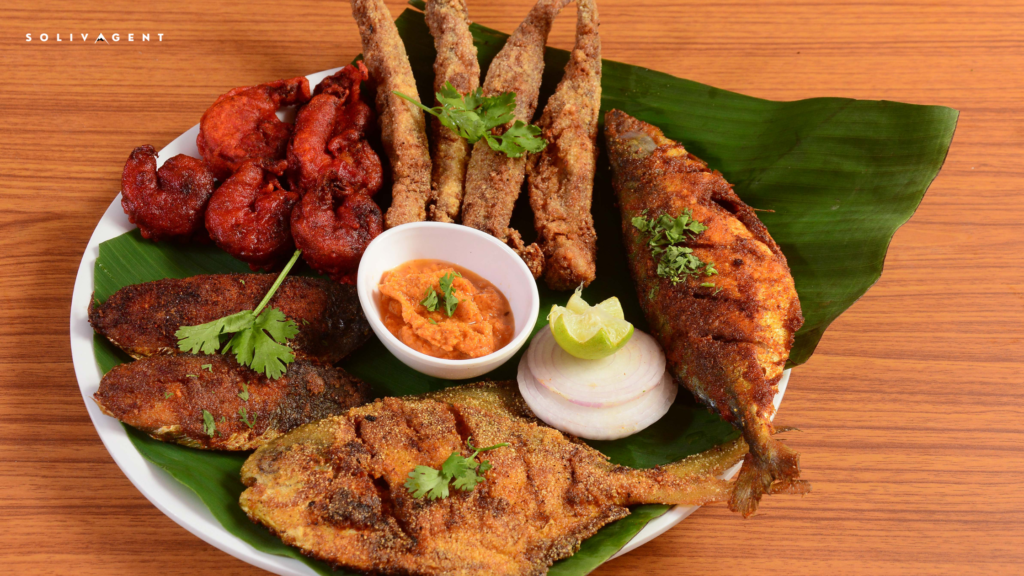
The Konkan coast boasts a variety of fish. The cooking techniques, primarily grilling and frying, are designed to highlight the fish’s natural flavor.
This method is often used for larger fish like pomfret or kingfish. The fish is marinated in a simple blend of spices like turmeric, red chili powder, and garlic. It’s then grilled over charcoal or a griddle until tender and smoky.
Smaller fish like sardines or mackerel are typically fried. The fish is often coated in a spicy masala before being deep-fried to a golden crisp.
Tisrya
Tisrya, or clams, are a prized seafood delicacy in the Konkan region of India.
Traditionally, Tisrya are enjoyed during specific seasons, excluding May, June, July, and August, as these are considered breeding months. This practice reflects a deep-rooted respect for the ecosystem.
Tisrya require careful cleaning and preparation before cooking. Konkan cuisine offers a variety of ways to savor them, including:
- Sukha Tisrya: A dry preparation with a spicy and flavorful twist.
- Tisrya Masala: A rich gravy-based dish, often accompanied by potatoes and spices.
- Tisrya Curry: A milder curry variation, enjoyed with rice or bread.

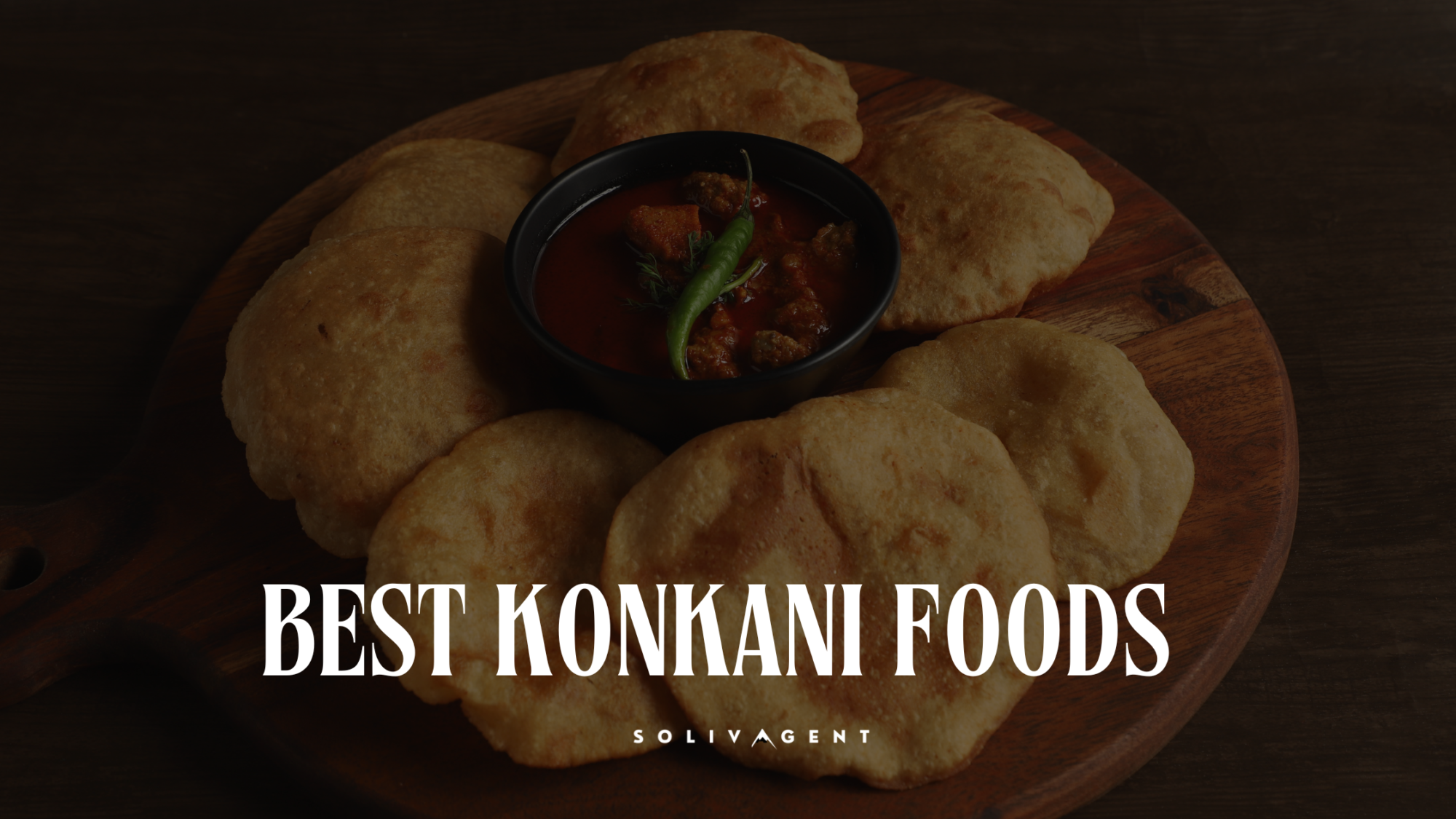
Program iz I like the efforts you have put in this, regards for all the great content.
Thank you. It means a lot to me. Am glad you liked it!
Real Estate Awesome! Its genuinely remarkable post, I have got much clear idea regarding from this post . Real Estate
Fourweekmba I appreciate you sharing this blog post. Thanks Again. Cool.
Glas I could Help!
whoah this blog is excellent i like reading your articles.
Stay upp the good work! Youu realize, many people aree looking around
for this information, you can aid them greatly. http://Boyarka-inform.com/